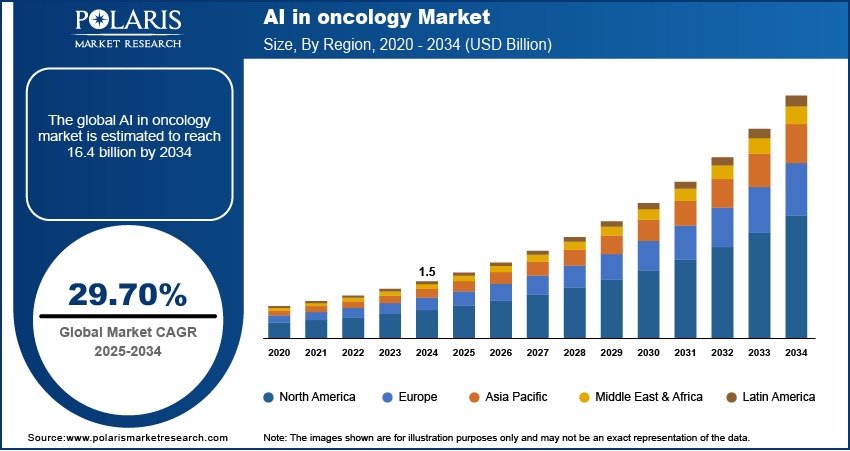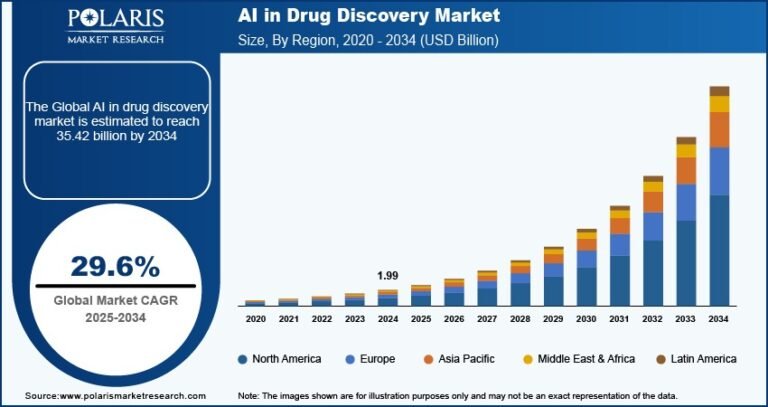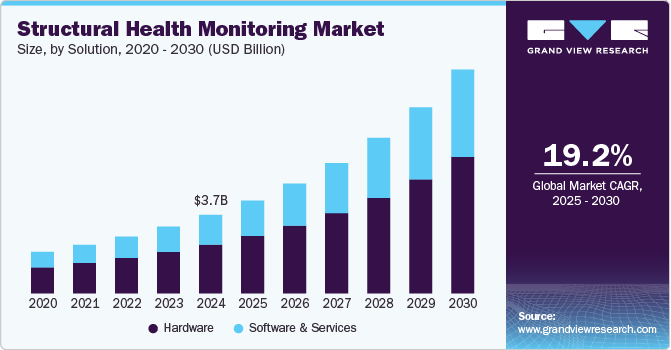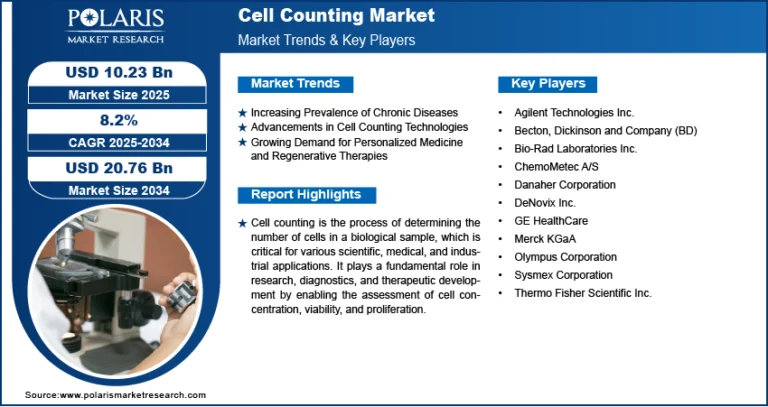AI in Oncology Market Size Projected to Reach USD 16.4 Billion by 2034 | CAGR: 29.70%

Key Market Trends for the AI in Oncology Market
-
Rising Adoption of Personalized Medicine
AI is increasingly used to tailor cancer treatments based on a patient’s genetic makeup, improving outcomes and reducing adverse effects. -
Growth in Medical Imaging and Diagnostics
AI algorithms are being widely deployed in radiology and pathology to detect cancers such as breast, lung, and skin cancers with high accuracy. -
Integration with Electronic Health Records (EHR)
AI tools are being integrated with EHR systems to analyze historical patient data and support oncologists in making real-time clinical decisions. -
Expansion of Drug Discovery Applications
AI is accelerating cancer drug discovery by predicting molecule behavior, optimizing trial designs, and identifying potential drug targets. -
Increasing Use of Natural Language Processing (NLP)
NLP is used to extract valuable insights from unstructured clinical notes and medical literature to assist in oncology research and treatment planning. -
Rise in AI-powered Clinical Decision Support Systems (CDSS)
Oncology-focused CDSS tools are being adopted to recommend evidence-based treatment pathways and reduce diagnostic errors.
Market Size & Forecast
Revenue forecast in 2034 USD 16.4 billion
CAGR 29.70% from 2025 – 2034
Request for Free Sample:
https://www.polarismarketresearch.com/industry-analysis/ai-in-oncology-market/request-for-sample
Market Overview:
The AI in oncology market is rapidly evolving, leveraging artificial intelligence to enhance cancer diagnosis, treatment planning, drug discovery, and patient management. AI technologies such as machine learning, deep learning, and natural language processing are being integrated into oncology workflows to analyze complex medical data, improve imaging accuracy, and personalize therapeutic approaches. These tools assist oncologists in detecting tumors earlier, predicting disease progression, and optimizing treatment regimens. As healthcare systems worldwide seek to improve outcomes while managing rising costs, AI’s role in oncology is becoming increasingly vital.
Key Market Opportunities:
A major opportunity lies in the growing adoption of AI-powered diagnostic imaging tools that enable faster and more accurate detection of cancers such as breast, lung, and prostate. AI also presents significant potential in accelerating oncology drug development by analyzing vast datasets to identify novel drug targets and streamline clinical trials. Additionally, the rise of precision medicine and personalized treatment plans tailored to individual genetic profiles opens new avenues for AI applications. Expanding partnerships between tech companies and pharmaceutical or biotech firms further enhance innovation and commercialization prospects across the oncology landscape.
Market Scope:
The AI in oncology market has a broad scope spanning various applications including diagnostics, treatment planning, patient monitoring, and administrative workflow optimization. It serves diverse stakeholders such as hospitals, research institutions, pharmaceutical companies, and telemedicine platforms. Geographically, North America leads the market due to advanced healthcare infrastructure and high R&D investments, while Asia-Pacific and Europe are witnessing rapid growth driven by increasing cancer incidence and digital health adoption. With continuous advancements in AI and growing integration with genomics and telehealth, the market is poised for substantial expansion, transforming cancer care globally.






